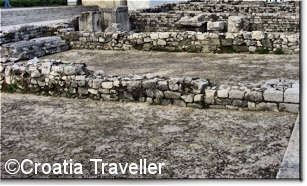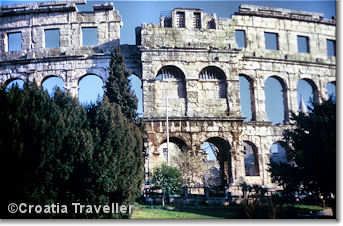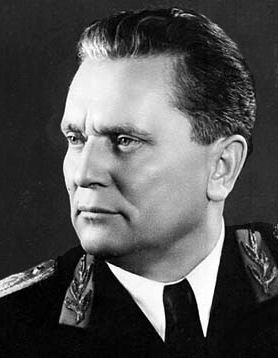Ancient History
Remember Illyria? "Illyria is a country permeated with the spirit of the Feast of Fools" according to Shakespeare in "Twelfth Night". The Bard was inspired by the Dalmatian coast, settled by the Illyrians about 1000BC.
Mainly known for their assiduous piracy, the Illyrians were eventually conquered by the Romans in 12AD who then extended their reach throughout modern-day Croatia. The Romans made Salona (Solin) their capital. As in most Roman provinces, the bargain was simple: Rome built roads, aqueducts, amphitheatres and infrastructure; the province provided soldiers for the Roman legions.
Remnants of Roman rule in Croatia include the amphitheatre in Pula, remnants of a Forum in Zadar and the street plan in Porec.
Dalmatia's most famous contribution to Rome was Emperor Diocletius who eventually retired to Split and built a magnificent palace.
Slavs, Venetians, Hungarians
Slavs began migrating into the region in the 7th century and organised them into clans. The most powerful was the Hrvat clan, hence the Slavic name for Croatia, Hrvatska.
The Frankish conquest in 800AD Christianised Croatia and in 925 Croatia crowned its first king, Tomislav. Unity was short-lived however and at the turn of the 11th century Venice made its move on the coast. Meanwhile, northern Croatia was falling into the hands of the powerful Hungarians to the north. The two superpowers vied for control of Croatia for the succeeding seven centuries. Venice retained the coast and Hungary (later Austria-Hungary) controlled the interior.
Ottomans
The rise of the Ottoman empire in the 16th century brought a fresh threat. Most of the interior fell to the Turks, even though the coast and Dubrovnik were never captured.
After the Turks lost the siege of Vienna in 1683, they relinquished their grip on Croatia which fell under the control of the Austro-Hungarian empire. Venice retained the coast until Napoleon's invasion of 1797.The 1815 Congress of Vienna awarded the coast to Austria and the interior of Croatia to Hungary.
South-Slavic unity
Throughout the 19th century, Croatia chafed under foreign rule. A movement called Jugenslavenstvo emerged which sought the unity of all south-Slavic people as an autonomous unity within the Austro-Hungarian empire. The leader of this movement was the Croatian hero, Ban Josip Jelacic.
The fall of the Austro-Hungarian empire in 1918 gave them their wish. The kingdom of Serbs, Croats and Slovenes was established but relations between the ethnicities became strained.
WWII
The tensions came to a head when Germany invaded the Kingdom in 1941. They installed the fervently nationalistic Ustashe party in power in Zagreb which soon set about eradicating the Serbian population in Croatia. Serbian resistance took the form of armed 'Chetniks' who responded by massacring Croats.
Meanwhile, Josip Broz 'Tito' led the Partizans in heroic resistance to the German occupation. In 1944, Tito entered Belgrade and was made Prime Minister,subsequently entering Zagreb in 1945.
The Tito years
After the war, Tito attempted to reconcile the uneasy ethnic factions and if not, reconcile, use stronger methods to stamp out dissent or any talk of independence. Nevertheless, the country prospered economically and many Croats talk nostalgically of Tito's rule.
When Tito died in 1980, ethnic tensions rose. When the Serbian, Slobodan Milosevic, became president of Yugoslavia in 1989, many Croats feared the rise of Serbian nationalism. In 1990, the Croatian nationalist, Franjo Tudjman was elected and quickly moved toward independence.
The 'Homeland War'
When Croatia declared independence in 1991, the Serbian community in the Krajina region seceded and heavy fighting broke out. The Serbian community was supported by the Federal Yugoslav Army who intervened under the pretext of halting "ethnic fighting". Much of Croatia fell to Federal forces, including the city of Vukovar in Slavonia which was reduced to rubble after a long siege. The walled Adriatic city of Dubrovnik, was mercilessly shelled by Serbian-Montenegrin forces.
In 1993, the Croats succeeded in pushing back the Serbs from the southern Krajina but the Serbs responded by proclaiming themselves a Republic and 'cleansing' their territory of remaining Croats.
In 1995, the Croatian military launched a massive assault on Serbian positions in the Krajina and recaptured the territory. The Serb army and about 150,000 civilians fled to Serbia as Croatia consolidated its borders.
Post-War
The Dayton Peace Accord established Croatia's borders and provided for a gradual return of the Serb-held province of Slavonia which was accomplished in 1998.
Certain issues remain contentious since the 'Homeland War'. International organisations have pressed Croatia to allow displaced Serbs to return but the process is slow. Croatia has prosecuted some officers for war crimes during the 1990s but came under much international pressure to turn over alleged war criminal Ante Gotovina. General Gotovina was wanted for his role in the massacre of civilians in the Krajina in 1995. International authorities captured him in the Canary Islands and returned him to the Hague for prosecution, an action that was highly controversial in Croatia.
In 2011, Croatia signed an Accession Treaty and was formally admitted to the European Union in 2013.
Join the Croatia Traveller Group
Recommended Experiences
©CroatiaTraveller 2005-2024 All rights reserved






 History of Istria
History of Istria Jewish Heritage Dubrovnik
Jewish Heritage Dubrovnik
 Architecture in
Croatia
Architecture in
Croatia

